Functional characterization of 14 Pht1 family genes in yeast and their expressions in response to nutrient starvation in soybean
- PMID: 23133521
- PMCID: PMC3485015
- DOI: 10.1371/journal.pone.0047726
Functional characterization of 14 Pht1 family genes in yeast and their expressions in response to nutrient starvation in soybean
Abstract
Background: Phosphorus (P) is essential for plant growth and development. Phosphate (Pi) transporter genes in the Pht1 family play important roles in Pi uptake and translocation in plants. Although Pht1 family genes have been well studied in model plants, little is known about their functions in soybean, an important legume crop worldwide.
Principal findings: We identified and isolated a complete set of 14 Pi transporter genes (GmPT1-14) in the soybean genome and categorized them into two subfamilies based on phylogenetic analysis. Then, an experiment to elucidate Pi transport activity of the GmPTs was carried out using a yeast mutant defective in high-affinity Pi transport. Results showed that 12 of the 14 GmPTs were able to complement Pi uptake of the yeast mutant with Km values ranging from 25.7 to 116.3 µM, demonstrating that most of the GmPTs are high-affinity Pi transporters. Further results from qRT-PCR showed that the expressions of the 14 GmPTs differed not only in response to P availability in different tissues, but also to other nutrient stresses, including N, K and Fe deficiency, suggesting that besides functioning in Pi uptake and translocation, GmPTs might be involved in synergistic regulation of mineral nutrient homeostasis in soybean.
Conclusions: The comprehensive analysis of Pi transporter function in yeast and expression responses to nutrition starvation of Pht1 family genes in soybean revealed their involvement in other nutrient homeostasis besides P, which could help to better understand the regulation network among ion homeostasis in plants.
Conflict of interest statement
Figures
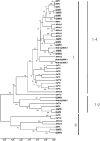
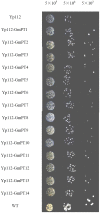
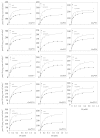
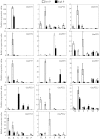
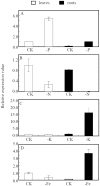

References
-
- Holford I (1997) Soil phosphorus: its measurement, and its uptake by plants. Aust J Soil Res 35: 227–240.
-
- Marschner H (1995) Mineral nutrition of higher plants. San Diego, CA: Academic Press. 889 p.
-
- Raghothama K (1999) Phosphate acquisition. Annu Rev of Plant Biol 50: 665–693. - PubMed
Publication types
MeSH terms
Substances
LinkOut - more resources
Full Text Sources
Other Literature Sources
Research Materials
Miscellaneous

